
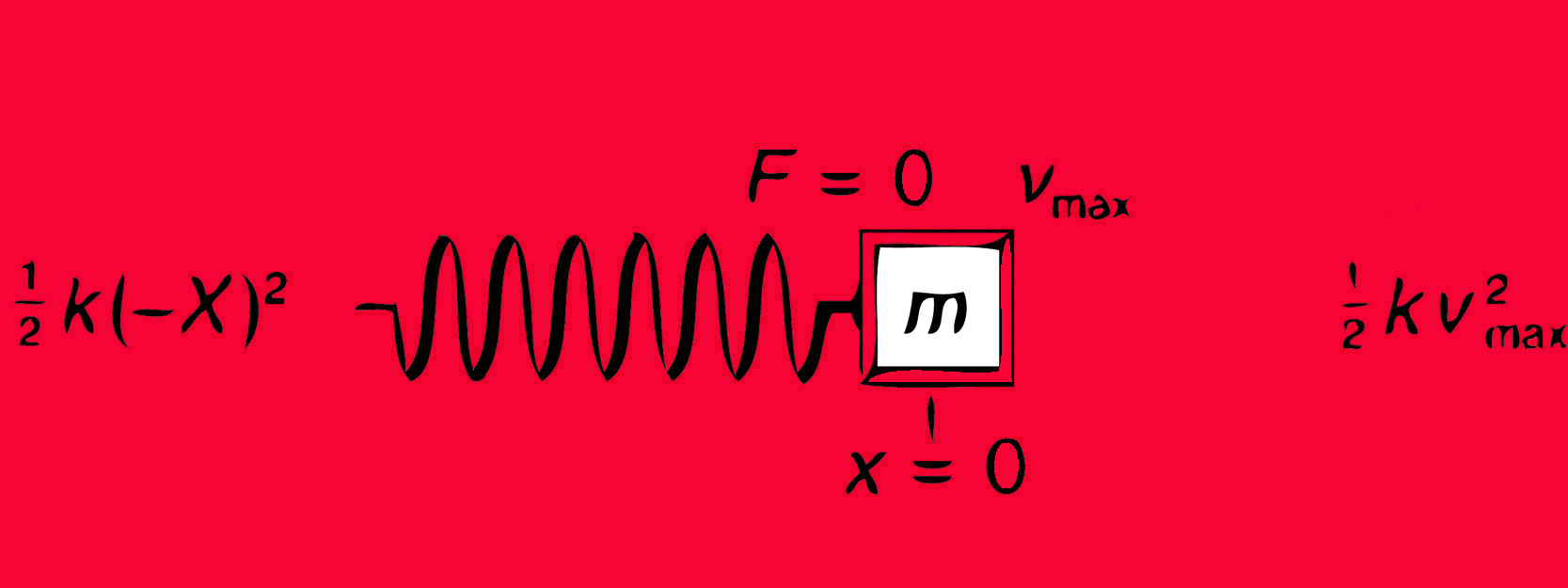

The spectacle is over and in the end the machine won. We can but only wonder, during that magnificent final, if the queenhood were scratching their heads about who to clap for. After all, over in the Kingdom, they were watching arch rivals play it out in their garden of Eden, not forgetting the hand of god of 86 that prevails in the memory of a generation.
The hand of SAM however, ahhh, that is a whole different story altogether our dear friends and one that will be inscribed forever as a decisive moment without artifice or rancor. Admittedly, there are those that persist in believing in the higher order of things when it comes to the question of creation. Here at Team Spam headquarters however, we believe that the gears of cognition are driven by careful planning, fueled with a healthy mix of spice and the right vibes to jibe. What are we gibbering about? Apologies for those who may be taking up this story here, in which case, remove yarselves and redirect yarselves here. For those who wish to continue in the magnificent explorations of SAM, then let us refresh your memories.
In our last log, we expressed our delight in having received a spanking brand new set of lego pieces to make SAM's bodily parts. We left you in heightened suspense about one minor yet critical detail: How the hell were we going to make SAM's hand? After much searching, we believe to have found SAM's hand. No, not in a car boot sale. Rather, we are proud to say our quest struck gold after some serious problem solving of the holy-istic nature.
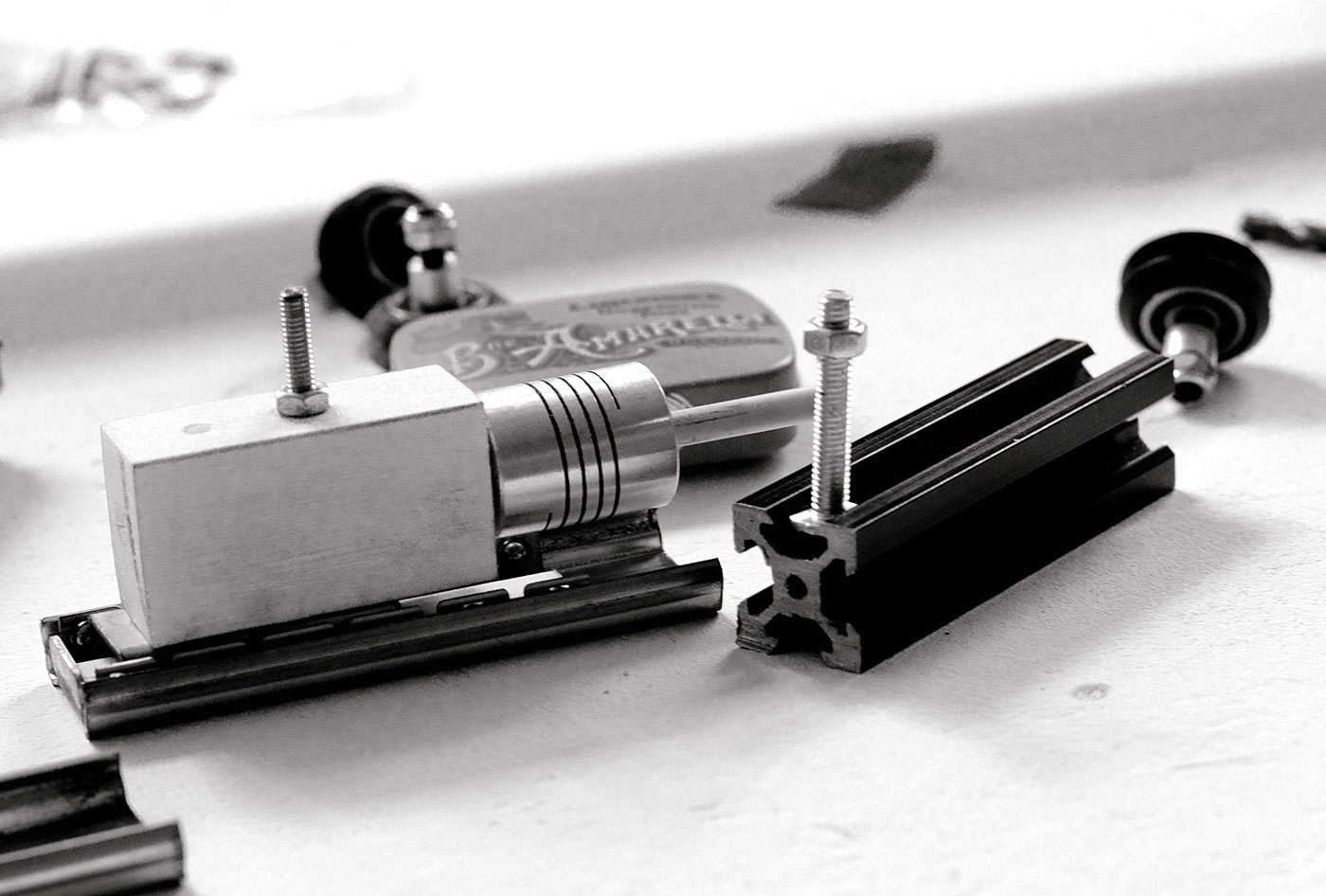
Bits n' bobs for an idea brewing - Team SPAM - 2014
Sketchy Concepts
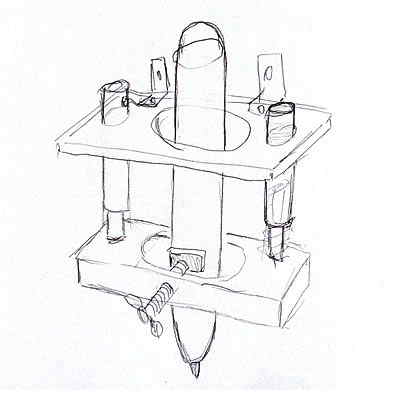
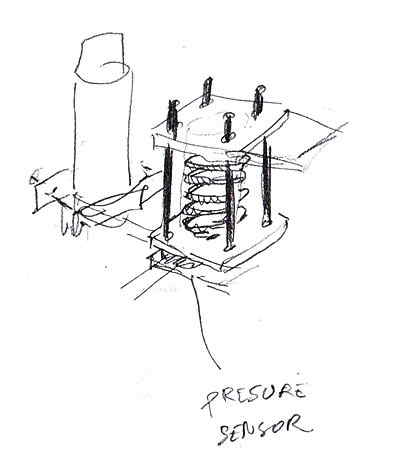
Hand design concepts
Design problem solving is a multi-dimensional neuron tickling activity, producing enough heat to fry an egg on ya head - for those fortunate to have the necessary bald spot. Finding a solution to the creation of SAM's hand was of no exception. It was a mental activity that ignited a process that bordered on scrambled to fried with the hard boiled version only popping out at the other end once Team Spam reconvened after a session in Holland and another with family gathering respectively.
It all came together one rainy day with the transmission of an idea, connecting the left hemisphere to the spindly jointed right arm to finally end up at the hand grasping a big fat marker pen. What was scribbled, doodled and jotted down in those most heated of sessions were perhaps odd looking markings akin to what one may find on the inside of caves in the French countryside. To us though they were meaningful intentions that imbued with the righteousness of a master designer.
This was a crucial moment in the building of our master plan, we were entering The Twighlight Zone, where darkness prevails and designer nightmares loom. Working with physical and mechanical parts at a conceptual level requires some special skills. Notably, the ability to visualise possible solutions in three dimensions and from all perspectives. Furthermore, one needs to think about the design as a whole, how the parts all fit together and making sure they will do exactly what you want them to do without hindering the rest of the structures. Which basically results in a mind bending process close to analysing three Esher lithographs at the same time. If we surmonted this and lived to tell the story, then… well, SAM would have a hand basically.
More Sketchy Drawings
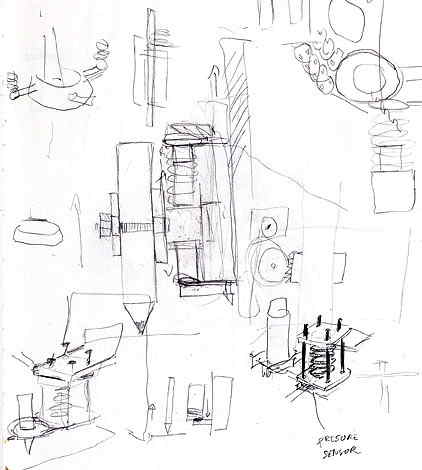
Hand design concepts
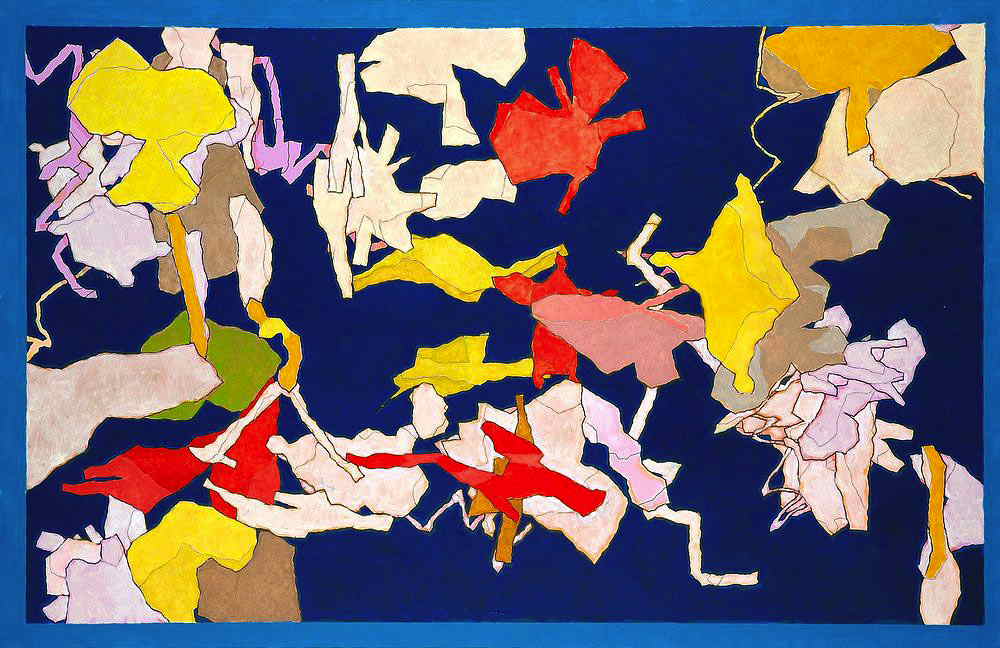
Remembering Burgess - Harold Cohen - 2010
Force sensitive resistors are pretty basic components in the world of Arduino but where to put it in our system? Furthermore, how to exert a downward force on our drawing tool and get back smooth measurements that would allow us to use this data in a useful manner? One of the answers came pretty quickly - why not use a spring? In this way we could transmit the force, exerted as the tool hits the surface, to a sensor. More scribbles resumed and a flurry of concepts began to flow.
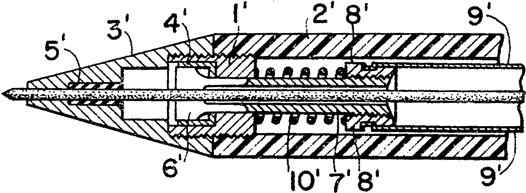
A neat design solution hidden away awaits us...
What have we learned ?
Taking a holistic approach to your design is being able to juggle multiple ideas and propose plausible possibilities that account for the bigger picture. As opposed to a monolithic perspective, that simply just sees a huge rock at the beginning of a Stanley Kubrick film. It requires divergent thinking (generating many unique ideas) and then convergent thinking (combining those ideas into the best result), to paraphrase a certain somebody out there.
Part 2 of this log entitled Pressure Drop, will describe how we solved the mystery of springy things, tamed the forces of sensitive resistors and put all that together in a multi-linear motion system for SAM's hand. Keep ya eyes peeled on the BlinkerNet, follow us on the twitspeak nano-information force-feeder or simply drop us an email and we'll see you get the latest info as it happens. Ciao for now.
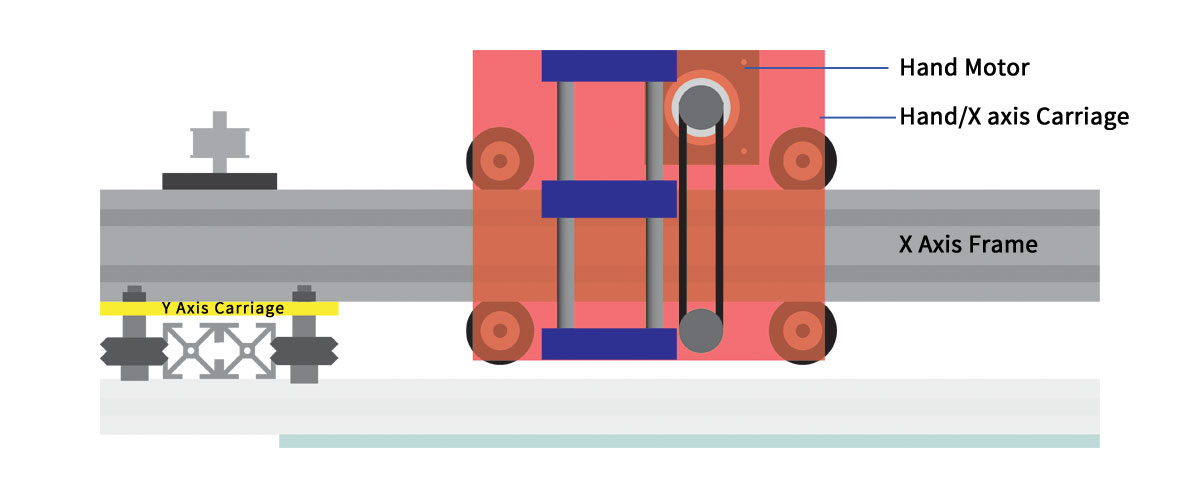
Diagram of a first concept for SAM's hand - Team SPAM - 2014